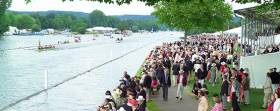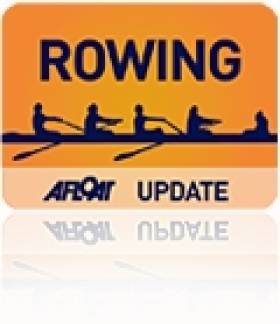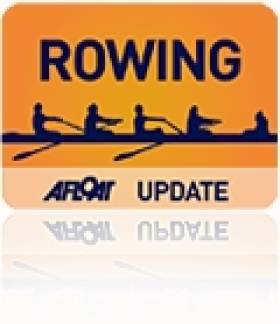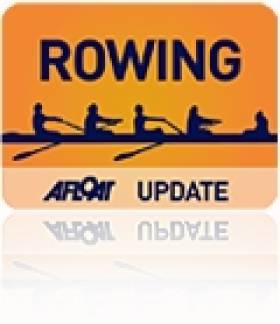Displaying items by tag: Lady Elizabeth
Ireland Crews Struggle at Henley Royal Regatta
#Rowing: On the first day of Henley Royal Regatta, Ireland’s three crews fell to opposition which made good starts.
UCD’s senior eight were beaten by Drexel University of Philadelphia in the Temple Cup for student eights. Drexel carved out an early lead, but UCD came back were in real contention to about halfway, when the Americans moved away to a clearwater lead, which they held to the end.
In the Thames Cup for club eights, Commercial fell to a young Dutch composite which made light of the difficult conditions of choppy water and a headwind. They started brilliantly, held off a push by Commercial and won well.
Lady Elizabeth, rowing in the Wyfold for club fours, veered off course early and hit the booms. While they recovered, there was no real prospect of catching leaders Tideway Scullers.
Henley Royal Regatta (Selected Results; Irish interest)
Temple (Eights, Student): Drexel University, USA bt UCD 2 ¼ l, 7:23
Thames (Eights, Club): Roeivereeniging Willem III, the Netherlands bt Commercial 3¾ l, 7:13.
Wyfold (Four, Club): The Tideway Scullers’ School A bt Lady Elizabeth easily; 8:05.
Henley Hopes Short-lived for Lady Elizabeth Crew
#Rowing: Henley Royal Regatta did not yield any early joy for Irish crews this morning. In the Wyfold Cup coxless fours, Lady Elizabeth were beaten by Nottingham Rowing Club ‘A’. The English crew cut across from their station at the start and took a lead which they did not relinquish. Lady Elizabeth tried hard in the warm conditions, but their young opponents held on to their lead and won by two and a half lengths.
Henley Royal Regatta, Day One (Irish interest)
Wyfolds (Fours, Club): Nottingham RC ‘A’ bt Lady Elizabeth BC 7 mins 39 seconds, 2½ l.
Lady Elizabeth Bow Out of Henley Rowing
#ROWING: Lady Elizabeth lost to London club The Tideway Scullers' in the Britannia Cup for club coxed fours at Henley Royal Regatta today. The Irish crew were trailing by a length after a quarter of a mile and the deficit had opened up further by half way. The result left Three Castles as the only Irish club still in the Henley draw, though Anthony English, representing Nottingham Rowing Club, also won today.
Henley Royal Regatta, Day Two (Selected Results; Irish interest)
Britannia Challenge Cup (Men’s Four, coxed, Club): The Tideway Scullers’ School bt Lady Elizabeth BC (B Smyth, PJ Waldron, D Meehan, S King; cox: B Farrell) 1¾ l, 7 mins 49 secs.
Prince of Wales Challenge Cup (Men’s Quadruple Sculls, Intermediate): Tyrian Club and Thames RC bt Queen’s University (G McKillen, A Boreham, T Oliver, C Beck) 3l, 7:17.
Double Sculls Challenge Cup (Men, Open): Three Castles (D Neale, E Grigalius bt Roy Roy (C Owen, J Hale) 3l, 8:08.
Diamond Sculls (Men’s Single, Open): A English (Nottingham) bt L Wells (Thames) easily, 9:15.
Irish Rowing Crews Qualify For Henley Royal Regatta
#ROWING: The Lady Elizabeth coxed four and single sculler Anthony English both qualified for the main draw at Henley Royal Regatta today. The Lady Elizabeth crew of Brendan Smyth, Stuart King, Peter Waldron, David Meehan and cox Brendan Farrell will compete in the Britannia, while English, who has been based in Nottingham, is set for the the Diamond Sculls. It is the premier event for single scullers.
A number of Irish crews were not asked to pre-qualify. The Trinity senior eight will compete in the Temple Cup; Queen’s University have a quadruple scull in the Prince of Wales; Dave Neale and Eimantas Grigalius of Three Castles are entered in the Double Sculls.
Henley Royal Regatta – Qualifiers (Irish interest)
Diamond Sculls: A English
Britannia (Fours, coxed): Lady Elizabeth


























